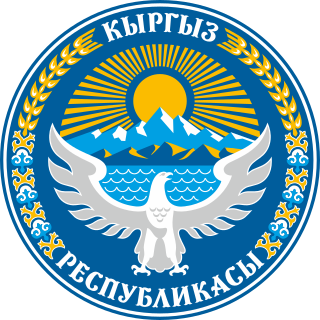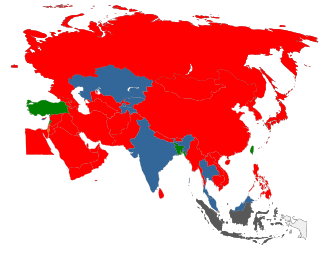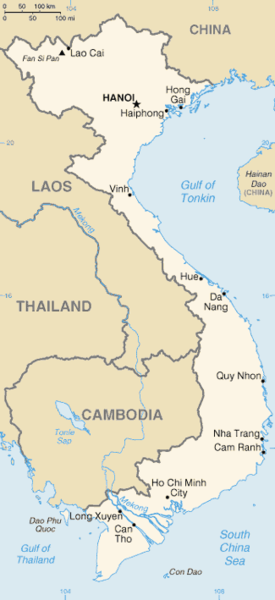
Sexual slavery and sexual exploitation is an attachment of any ownership right over one or more people with the intent of coercing or otherwise forcing them to engage in sexual activities. This includes forced labor that results in sexual activity, forced marriage and sex trafficking, such as the sexual trafficking of children.
Reproductive rights are legal rights and freedoms relating to reproduction and reproductive health that vary amongst countries around the world. The World Health Organization defines reproductive rights as follows:
Reproductive rights rest on the recognition of the basic right of all couples and individuals to decide freely and responsibly the number, spacing and timing of their children and to have the information and means to do so, and the right to attain the highest standard of sexual and reproductive health. They also include the right of all to make decisions concerning reproduction free of discrimination, coercion and violence.

The Convention on the Elimination of all Forms of Discrimination Against Women (CEDAW) is an international treaty adopted in 1979 by the United Nations General Assembly. Described as an international bill of rights for women, it was instituted on 3 September 1981 and has been ratified by 189 states. Over fifty countries that have ratified the convention have done so subject to certain declarations, reservations, and objections, including 38 countries who rejected the enforcement article 29, which addresses means of settlement for disputes concerning the interpretation or application of the convention. Australia's declaration noted the limitations on central government power resulting from its federal constitutional system. The United States and Palau have signed, but not ratified the treaty. The Holy See, Iran, Somalia, Sudan, and Tonga are not signatories to CEDAW.

Human rights in Uganda have trended for the past decades towards increasing harassment of the opposition, cracking down on NGOs which work on election and term limits, corruption, land rights, environmental issues, womens, children and gay rights. In 2012, the Relief Web sponsored Humanitarian Profile – 2012 said Uganda made considerable developments Since at least 2013 the Freedom in the World report by Freedom House has identified Uganda as a country considered to be "Not Free".There are several areas of concern when it comes to human rights in Uganda, and the "Not Free" classification is due to both low political rights and civil liberties rankings.

Bride kidnapping, also known as marriage by abduction or marriage by capture, is a practice in which a man abducts and rapes the woman he wishes to marry.

Human rights in Kyrgyzstan improved after the ouster of President Askar Akayev in the 2005 Tulip Revolution and the installment of a more democratic government under Roza Otunbayeva. While the country is performing well compared to other states in Central Asia, many human rights violations still take place. While LGBT rights have been declining in recent years, freedom of press has been improving.

Prostitution is legal and regulated in Bangladesh. Prostitutes must register and state an affidavit stating that they are entering prostitution of their own free choice and that they are unable to find any other work. Bangladeshi prostitutes often suffer poor social conditions and are frequently socially degraded.

Women in Kazakhstan are women who live in or are from Kazakhstan. Their position in society has been and is influenced by a variety of factors, including local traditions and customs, decades of Soviet regime, rapid social and economic changes and instability after independence, and new emerging Western values.

Women in Kyrgyzstan traditionally had assigned roles, although only the religious elite sequestered women as was done in other Muslim societies. Rural inhabitants continue the traditional Siberian tribal practice of bride kidnapping. Bride kidnapping, known as ala kachuu, girls as young as 12 years old are kidnapped for forced marriage, by being captured and carried away by groups of men or even relatives who, through violence or deception, take the girl to the abductor's family who forces and coerces the young woman to accept the illegal marriage. In most cases, the young woman is raped immediately in the name of marriage.[8]

Women in the Democratic Republic of the Congo have not attained a position of full equality with men, with their struggle continuing to this day. Although the Mobutu regime paid lip service to the important role of women in society, and although women enjoy some legal rights, custom and legal constraints still limit their opportunities.
Kazakhstan is a source, transit, and destination country for men, women, and children trafficked from Uzbekistan, Kyrgyzstan, Tajikistan, and Afghanistan to Kazakhstan and on to Russia and the United Arab Emirates (U.A.E.) for purposes of sex slavery and forced labor in the construction and agricultural industries. Kazakhstani men and women are trafficked internally and to the U.A.E., Azerbaijan, Turkey, Israel, Greece, Russia, and Germany and the United States for purposes of forced labor and sexual exploitation.
Mary Shanthi Dairiam is a Malaysian human rights and women's rights advocate. She was the elected member from Malaysia to the Committee on the Elimination of All Forms of Discrimination against Women serving the Committee from 2005 - 2008.
The evolution and history of women in Asia coincide with the evolution and history of Asian continent itself. They also correspond with the cultures that developed within the region. Asian women can be categorically grouped as women from the Asian subregions of Central Asia, East Asia, North Asia, South Asia, Southeast Asia, and Western Asia.
Contraceptive rights in New Zealand are extensive. There are many options available to women seeking contraception. There are also options for men. Government funding keeps the cost of most types of contraception low in most cases. Family planning options in New Zealand are generally in keeping with the United Nations stance towards sexual and reproductive rights although the country has received criticism in some aspects.
Bride buying in India is the practice of forced arranged marriages through human trafficking. Brides are commonly referred to as "paro" or "molki" within this framework. The brides are sold by their parents to human traffickers who transport and sell them within relatively wealthier regions of Northern India. The desire for a male child and subsequent female infanticide has resulted in a significantly lowered sex ratio within India, creating an abundance of unmarried men in Haryana, Punjab, Rajasthan, and Western UP. These men resort to purchasing inter-region women from impoverished communities mainly to continue their family lineage. The key motivation for low-income families to sell their daughter is to receive financial compensation and avoid having to pay a dowry. Major sources are the impoverished parts of Northeast India (Assam), Bihar, Jharkhand, Odisha, West Bengal, and Andhra Pradesh.
Sex trafficking in China is human trafficking for the purpose of sexual exploitation and slavery that occurs in the People's Republic of China. It is a country of origin, destination, and transit for sexually trafficked persons.
Sex trafficking in Myanmar is human trafficking for the purpose of sexual exploitation and slavery that occurs in the Republic of the Union of Myanmar. Myanmar is primarily a source and transit country for sexually trafficked persons.

Sex trafficking in Vietnam is human trafficking for the purpose of sexual exploitation and slavery that occurs in the Socialist Republic of Vietnam. Vietnam is a source and, to a lesser extent, destination country for sexually trafficked persons.

Sex trafficking in Kyrgyzstan is human trafficking for the purpose of sexual exploitation and slavery that occurs in the Kyrgyz Republic.

Sex trafficking in Kazakhstan is human trafficking for the purpose of sexual exploitation and slavery that occurs in the Republic of Kazakhstan.















